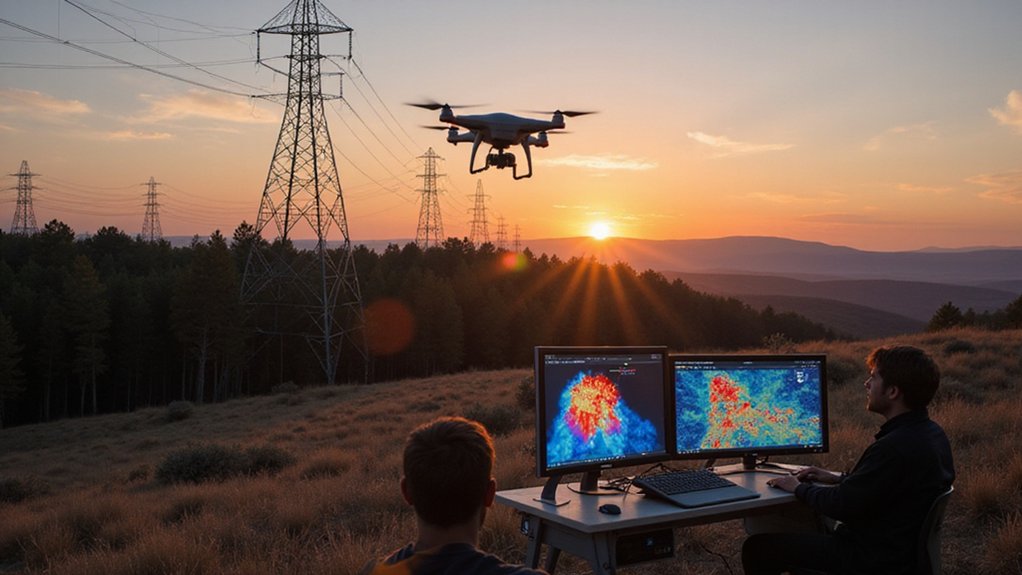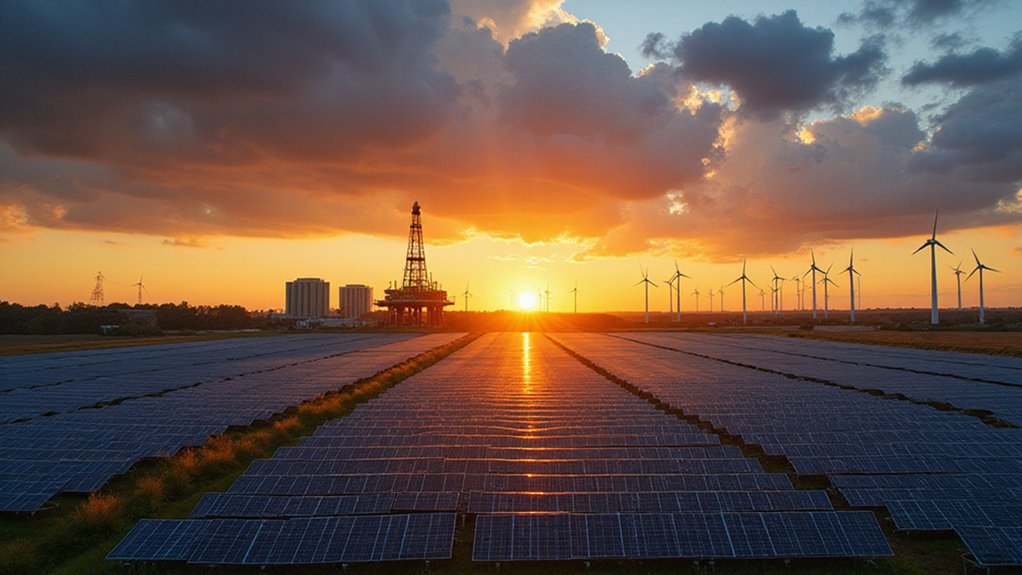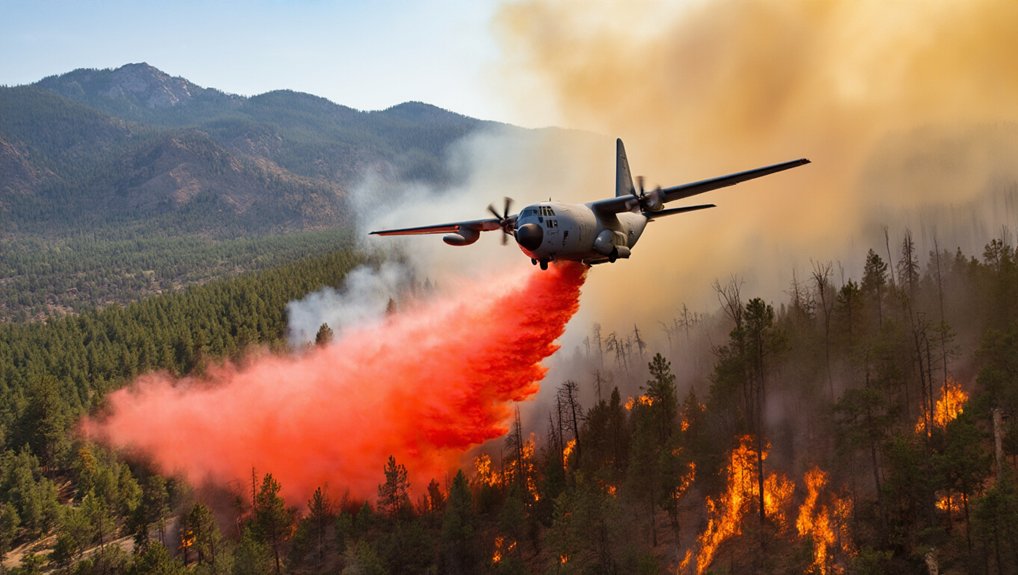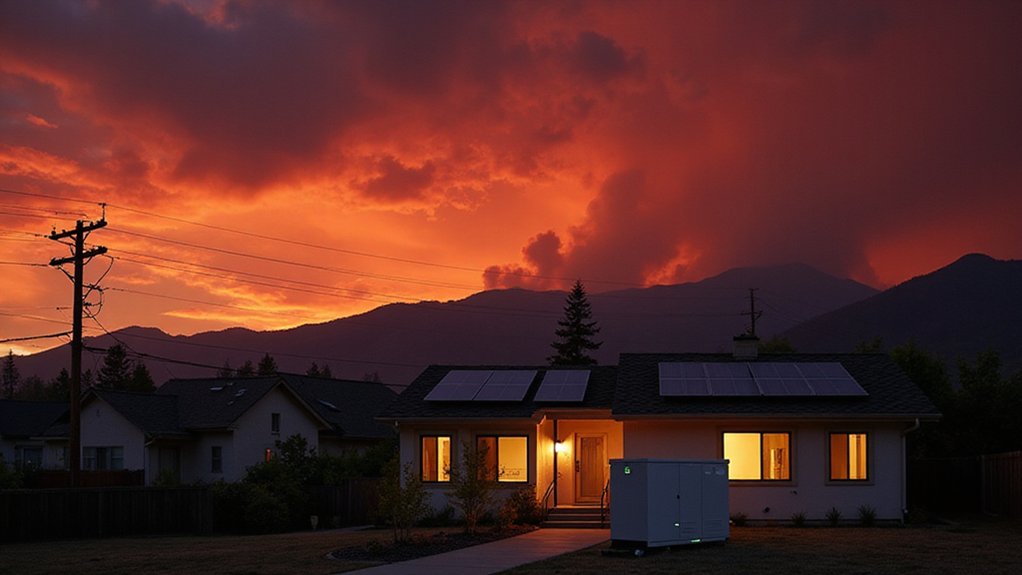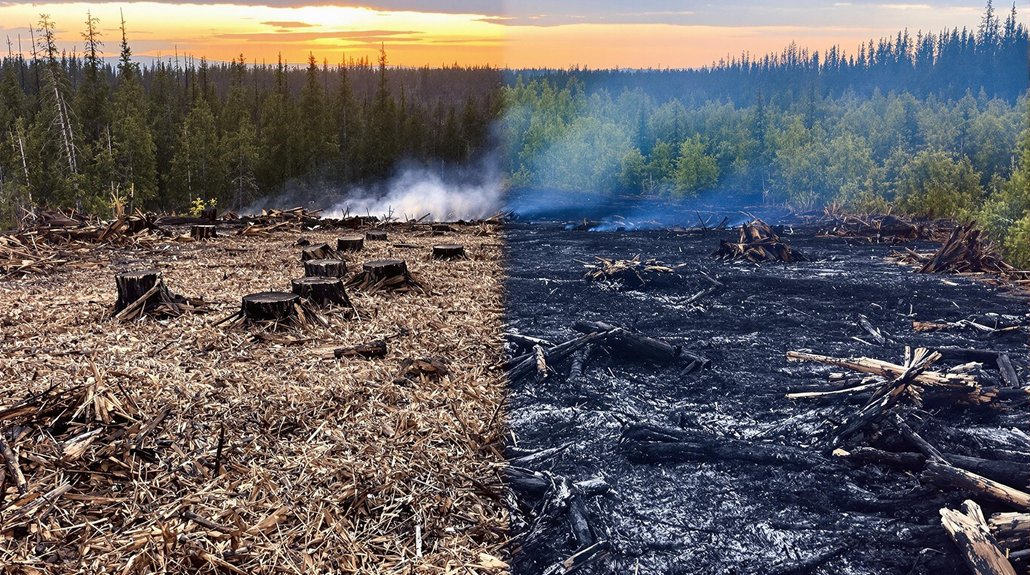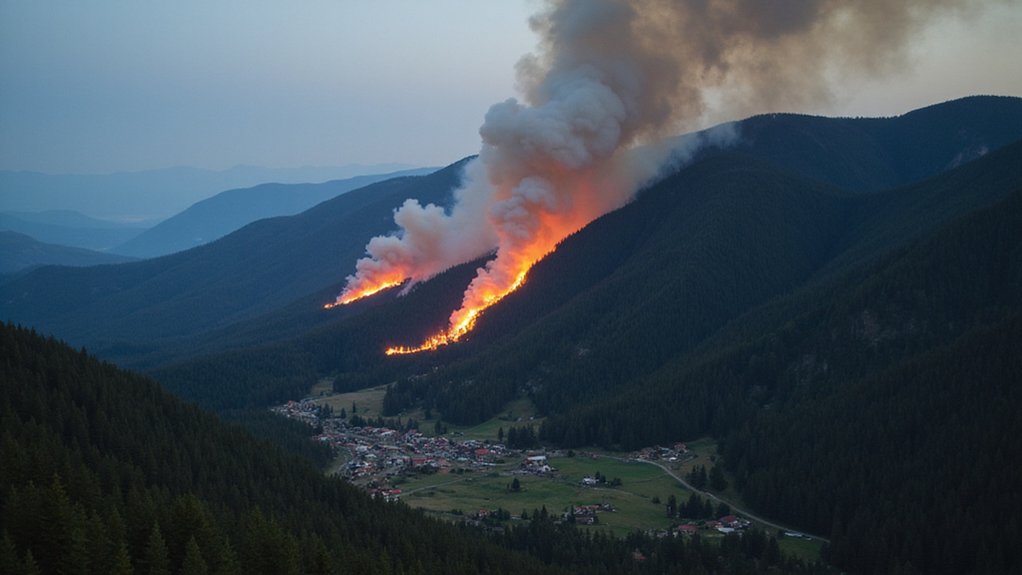Utility companies are finally ditching manual inspections for AI-powered solutions to combat wildfires. Drones equipped with smart imaging technology identify vegetation hazards in hours instead of weeks. These systems analyze weather patterns and equipment wear to predict failures before disaster strikes. Smart sensors throughout the grid detect anomalies in milliseconds, flagging dangerous conditions immediately. Pretty impressive for an industry not exactly known for innovation. The technology might just save lives—and billions in liability settlements.
While power companies once relied on manual inspections and educated guesses, they’re now diving headfirst into artificial intelligence—and it’s about time. The old ways weren’t cutting it. Not even close. With climate change turning forests into tinderboxes, the stakes couldn’t be higher. AI is changing everything.
Gone are the days when utilities sent workers to manually inspect thousands of miles of power lines. Now, drones equipped with AI imaging technology zoom across transmission corridors, identifying dangerous vegetation encroachment in hours instead of weeks. These systems don’t get tired, don’t miss details, and definitely don’t call in sick on Mondays. AI excels at identifying trends in massive datasets from drone inspections that would overwhelm human analysts.
The tech doesn’t just look pretty—it’s predictive. Advanced AI models crunch massive datasets from weather patterns, equipment wear, and historical failures to forecast exactly where and when problems might occur. Imagine knowing a transformer will fail before it sparks a 10,000-acre inferno. Groundbreaking stuff.
AI doesn’t just react—it predicts disasters before they happen. That’s not just smart tech; it’s wildfire prevention reimagined.
Real-time monitoring has become the utility industry’s new obsession. Smart sensors scattered throughout the grid feed constant streams of data to AI systems that can detect anomalies in milliseconds. A power line sagging too close to dry brush? The AI flags it immediately. No more waiting for disaster to strike. These systems also enable improved fault detection across the grid, identifying potential failure points before they can cause catastrophic outages. Deploying these technologies achieves high efficiency rates similar to geothermal power systems, which maintain over 90% capacity factors with minimal energy loss.
The benefits extend beyond wildfire prevention. These same systems help utilities spot energy theft, manage fluctuating demand, and integrate renewable energy sources. They’re even improving customer experience—though let’s be honest, that bar was pretty low to begin with.
Critics worry about cost, but what’s more expensive: implementing AI systems or paying billions in wildfire liability settlements? California utilities know that answer all too well.
For communities living under constant wildfire threat, this AI transformation can’t move fast enough. It’s not perfect—nothing is—but it’s a quantum leap beyond the clipboard-and-binoculars approach of yesterday.
When it comes to preventing deadly wildfires, artificial intelligence isn’t just a fancy upgrade—it’s becoming an essential lifesaver.
References
- https://www.utilitydive.com/news/ai-in-the-utility-industry/543876/
- https://resources.nvidia.com/en-us-energy-utilities/top-ai-usecases
- https://www.salesforce.com/energy-utilities/artificial-intelligence-utilities/
- https://individuals.voya.com/insights/investment-insights/power-hungry-ai-game-changer-utilities
- https://www.trccompanies.com/insights/benefits-of-ai-and-machine-learning-for-utility-companies/
